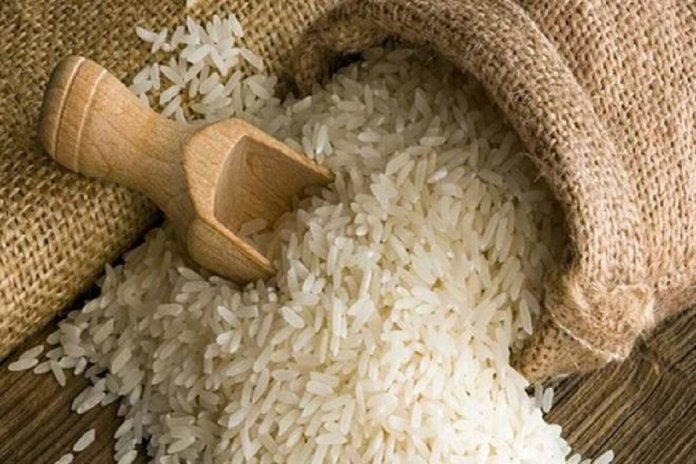Agriculture is one of the key industries where climate change will have a massive impact, as drier weather can make it difficult to cultivate and harvest crops. Indian scientists have been developing climate resilient crop varieties to combat the threat of rising global temperatures disrupting agricultural practises.
Table of Contents
To create mass awareness for adoption of climate resilient technologies, Prime Minister Narendra Modi dedicated 35 crop varieties with special traits to the nation and officially released India’s first-ever non-GM (genetically modified) herbicide-tolerant rice varieties on 28 September, 2021.
About Non-GM rice varieties
A non-Genetically Modified (GM) rice variety is tolerant to herbicide use. The Indian Agricultural Research Institute has come up with two varieties of these rice-Pusa basmati 1979 and Pusa Basmati 1985.
These varieties can be directly seeded and also require less money and labour for planting compared to conventional rice farming.
Pusa Basmati 1979 and 1985 have been developed by crossing well-known popular varieties—Pusa 1121 and Pusa 1509, respectively— with Robin, which is a drought-tolerant rice variety derived from Nagina 22, an upland drought-tolerant rice variety..
What is Imazethapyr?
Imazethapyr is a chemical used on crops for weed control management. It cannot be used on normal paddy, as the herbicide does not distinguish between the crop and the invasive plants. The Imazethapyr-tolerance rice variety was identified by S Robin, a rice breeder from Tamil Nadu Agricultural University in Coimbatore.
Benefits of the new varieties
Farmers can employ Imazethapyr since the newly produced rice varieties have a mutated acetolactate synthase (ALS) gene.
In rice, the ALS gene codes for an enzyme (protein) that synthesises amino acids for crop development and growth. As a result, the herbicide can be used safely on new rice varieties because it only kills weeds.
Farmers benefit since they don’t have to raise plants in nurseries before replanting them in paddy fields after three or four weeks. As a result, they can save significant amounts of water and labour.
What is Direct Seeding of Rice (DSR)?
In response to labour constraints and diminishing water tables, farmers in Punjab and Haryana are already using direct seeding of rice (DSR). This year alone, roughly 6 lakh of the total 44.3 lakh hectares area under paddy in the two states has come under DSR.
DSR cultivation is currently based on two herbicides, Pendimethalin (applied within 72 hours of sowing) and Bispyribac-sodium (after 18-20 days). These are costlier than Imazethapyr (Rs 1,500 versus Rs 300/acre). Furthermore, because the ALS gene is absent in humans and mammals, Imazethapyr has a broader weed-control range and is safer.
Paddy transplantation normally necessitates around 30 irrigations, each of which consumes about 5 hectare-cm of water (one hectare-cm equals 100,000 litres). Puddling takes up around 15 hectare-cm on its own. Overall, DSR is expected to use 30% less water, save Rs 3,000 per acre in labour costs, and save 10-15 days due to no nursery preparation.
Other Varieties
Besides the rice varieties, the Indian Council of Agricultural Research (ICAR) has also developed other crop varieties that are climatic resilient and with better nutrient content. These include drought-tolerant chickpea, wilt- and early-maturing soybean, bio-fortified wheat, pearl millet, maize, quinoa, buckwheat, winged bean and faba bean.
What is the need for climate resilient crop varieties?
According to the National Innovations in Climate Resilient Agriculture (NICRA), a project under ICAR, climate change has become an important area of concern for India to ensure food and nutritional security for (its) growing population. According to the report, while climate change has worldwide consequences, countries like India are particularly vulnerable due to the high population reliant on agriculture.
Climate change forecasts for the medium term (2010-2039) indicate “substantial negative repercussions” on Indian agriculture, with crop yield reductions ranging from 4.5 to 9% “depending on the magnitude and distribution of warming.
A presentation shared by the Union Ministry of Finance as part of the release of a Rs 6.28 lakh crore Covid-19 relief package in June this year had noted that whereas the “earlier focus of research was on developing higher yield crop varieties”, efforts are now being directed towards working on climate resilient crop varieties that are high on nutrition.
Varieties tolerant to diseases, insects pests, drought, salinity, and flooding, are also being developed along with those that are early maturing and amenable to mechanical harvesting.
With this we come to the end of this blog. Keep reading on hranker.com for more content.




